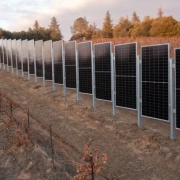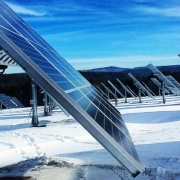Rutgers University’s 170 kW agrivoltaic project on its farm on the Cook campus in New Brunswick, New Jersey features a vertical solar installation designed by California-based Sunstall.
The farm operates as a production farm, research facility and teaching operation in support of the Rutgers School of Environmental and Biological Sciences and Rutgers New Jersey Agricultural Experiment Station related activities. At the farm, students, faculty and staff care for a variety of animals, including sheep, goats and cattle.
Click here to read the full article
Source: PV Magazine
—
If you have any questions or thoughts about the topic, feel free to contact us here or leave a comment below.



